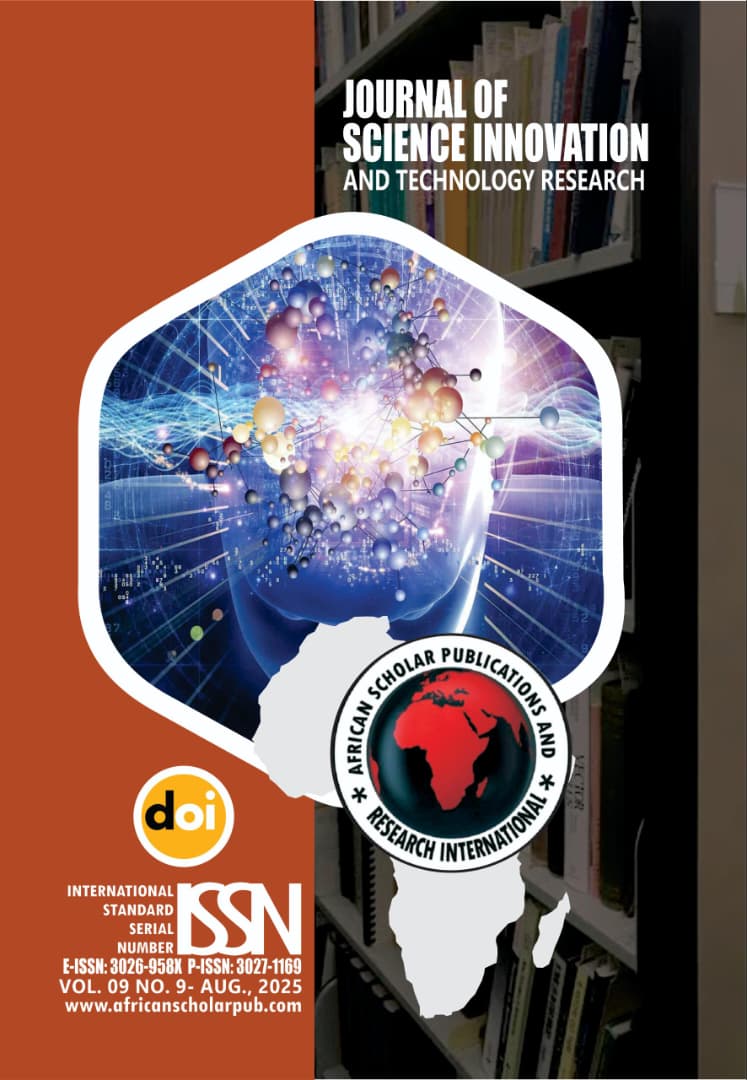Seasonal Assessment of Heavy Metals Concentrations in Sediment of the Sapele River, Nigeria
Abstract
The concentrations of heavy metals in the environment of Sapele Local Government Area, Delta State, Nigeria, were examined. This study employed an experimental design methodology. A total of fifteen composite sediment samples were gathered in December 2024 and June 2025. The sediment was collected using a corer and clean plastic bottles. The samples were air-dried, mechanically ground with a mortar and pestle, and sieved through a 2 mm mesh for subsequent analysis. A weight of 1.0 g of each sediment sample was placed into Kjeldahl flasks. Aqua regia (15 cm3) was introduced, mixed thoroughly, and allowed to sit overnight. The flasks were then heated on a hot plate at 50 °C for 30 minutes, after which the temperature was increased to 120 °C and maintained for 2 hours. Following cooling, 0.2 M HNO3 (10 cm3) was added to the mixture. The resultant solution was filtered using Whatman no. 541 filter paper. The filtrate was then transferred to a 50 cm3 standard flask and diluted to the mark with 0.2 M HNO3. The concentrations of heavy metals were analyzed using the AAS Unicam 939 model. The heavy metal concentrations (mg kg-1) recorded during the dry season were as follows: sediment: Fe (22.18 ± 14.82), Mn (9.67 ± 2.75), V (3.39 ± 3.30), Ni (2.18 ± 0.78), Cd (0.48 ± 0.75), while during the wet season, the values were: Fe (23.28 ± 0.24), Mn (9.45 ± 2.63), V (3.31 ± 3.34), Ni (1.94 ± 1.48), Cd (0.48 ± 0.74). The total average concentrations of heavy metals for both dry and wet seasons were: V (3.319), Ni (2.061), Cd (0.477), Pb (0.039), Mn (9.557), Co (0.117), Zn (0.042), Fe (22.833). The concentrations of heavy metals varied between the wet and dry seasons. The average concentrations of Ni, V, Cd, Pb, and Mn exceeded WHO standards in both seasons. Conversely, the average concentrations of Co in the sediment fell within the WHO recommended limits for both dry and wet seasons. Notably, Fe concentrations were the highest across all seasons.
Keywords:
Seasonal Variation, Niger Delta, Environmental Pollution, Heavy Metals, Sediment, Public HealthDownloads
ACCESSES
Published
Issue
Section
License
Copyright (c) 2025 Umudi Ese Queen, Ese Ekanem, Idongesit O. Ekpenyong, Sani Mamman Ibrahim, Onwugbuta Godpower Chukwuemeka, Suleiman Abdulmajid, Ikechukwu Chikwe, Chidi Henry, Chidi Victory, Erienu Obruche Kennedy (Author)

This work is licensed under a Creative Commons Attribution 4.0 International License.


















